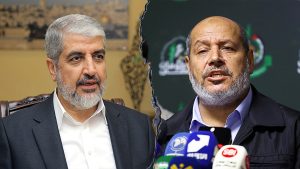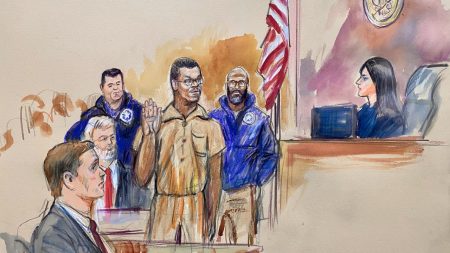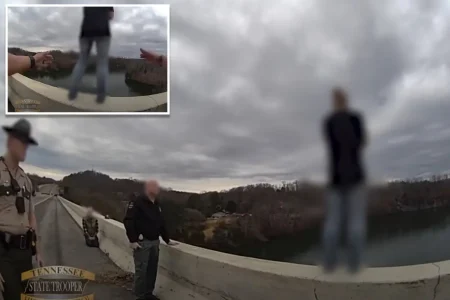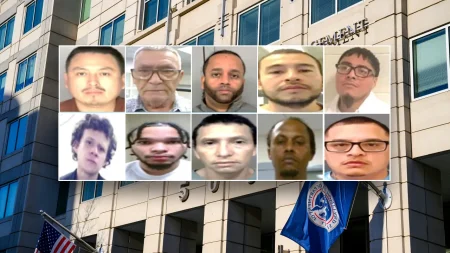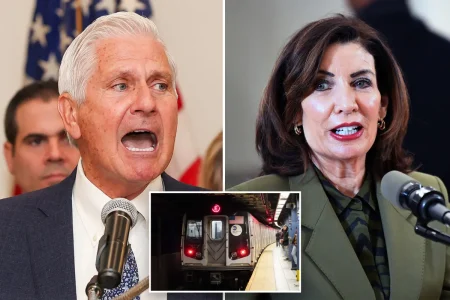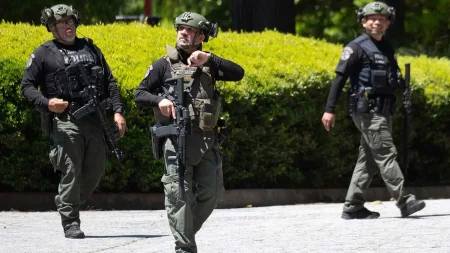Nepal’s Student Revolution: How Former Chief Justice Sushila Karki Emerged as a Symbol of Change
From Campus Protests to National Upheaval: The Rise of a New Political Movement
In a dramatic turn of events that has captured international attention, Nepal’s political landscape underwent a seismic shift this week as student-led protests culminated in the toppling of the government. At the center of this movement stands an unlikely revolutionary figure: Sushila Karki, the former chief justice whose reputation for integrity has made her the standard-bearer for a generation demanding change. What began as campus demonstrations rapidly evolved into a nationwide uprising that has redrawn the country’s political boundaries and potentially set Nepal on a new course during this critical juncture in its democratic journey.
The movement’s explosive growth took many observers by surprise. What started as localized student rallies on university campuses throughout Kathmandu on Monday quickly garnered momentum, drawing participants from across demographic lines. “We didn’t expect the protests to grow so rapidly,” explained Ramesh Bhattarai, a political analyst at Tribhuvan University. “But there was clearly a reservoir of frustration that had been building beneath the surface for months, perhaps years.” The demonstrations initially focused on educational reforms and anti-corruption measures, but as government forces responded with increasingly heavy-handed tactics, the protesters’ demands expanded to include nothing less than a complete governmental overhaul. By Wednesday afternoon, as thousands flooded the streets surrounding Singha Durbar, the seat of government, it became clear that Nepal was experiencing more than routine political unrest—this was a genuine popular uprising with the potential to fundamentally reshape the nation’s governance structures.
Sushila Karki: The Reluctant Revolutionary Leading a Generation’s Fight
The emergence of Sushila Karki as the movement’s symbolic leader represents one of the most fascinating aspects of Nepal’s unfolding political drama. Karki, who served as Nepal’s first female chief justice from 2016 to 2017, built her reputation on landmark anti-corruption rulings and a steadfast commitment to judicial independence. “Justice Karki was never a political activist in the traditional sense,” noted Priya Sharma, a constitutional law expert who worked alongside Karki during her tenure on the bench. “Her power stems from her moral authority and her demonstrated willingness to stand against corruption regardless of who was involved.” This reputation made her the perfect figurehead for students who view Nepal’s entrenched political class as fundamentally compromised by corruption and self-interest. Despite her initial reluctance to step into a political role, Karki appeared at several key demonstrations, her presence lending legitimacy to a movement that government officials had initially dismissed as disorganized and leaderless.
The student protesters who rallied behind Karki represent a generation that has come of age in post-monarchy Nepal, raised with democratic expectations but increasingly disillusioned by the gap between constitutional promises and political realities. “We’ve grown up watching the same politicians shuffle positions while nothing fundamentally changes,” said Maya Tamang, a 22-year-old student organizer from Kathmandu University. “Justice Karki represents something different—someone who has actually stood up against the system rather than benefiting from it.” This sentiment has resonated far beyond campus boundaries, connecting with Nepalis from various walks of life who share a growing frustration with political stagnation, economic underperformance, and persistent corruption. The protesters’ choice of Karki signals a desire not merely for new faces in government but for a fundamentally different approach to governance—one centered on accountability, transparency, and genuine public service rather than patronage and power politics.
The Violent Turning Point: How Peaceful Protests Escalated into Revolution
The transformation of peaceful demonstrations into a government-toppling uprising occurred with stunning rapidity, catalyzed by a series of confrontations that many observers now view as critical miscalculations by authorities. Monday’s initially peaceful gatherings took a violent turn when riot police deployed tear gas and water cannons against student demonstrators outside Tribhuvan University. The resulting chaos, captured on countless mobile phones and shared across social media platforms, galvanized public opinion and dramatically increased turnout for subsequent protests. “The government’s disproportionate response was the turning point,” explained Dr. Anjana Shakya, who directs the Himalayan Institute for Democracy. “What might have remained a student movement suddenly became everyone’s fight.”
By Tuesday, the demonstrations had spread beyond the capital to major cities including Pokhara, Biratnagar, and Nepalgunj, with participation swelling to include teachers, civil servants, labor unions, and even some security personnel who refused orders to suppress the protests. Wednesday’s decisive confrontation at Singha Durbar saw protesters breaching security perimeters in scenes reminiscent of Nepal’s earlier democratic revolutions. As images of the prime minister’s hasty evacuation circulated online, the government’s authority effectively collapsed, with multiple cabinet ministers tendering resignations throughout the evening. “It wasn’t just the size of the crowds that proved decisive,” noted former diplomat Rajendra Thapa. “It was the breadth of participation—when you see farmers standing alongside students, professionals alongside laborers, you’re witnessing not just a protest but a genuine people’s movement that transcends Nepal’s often rigid social and political divisions.”
Beyond the Uprising: Challenges and Opportunities in Nepal’s Democratic Transition
With the government’s fall now confirmed, Nepal enters a precarious transitional period fraught with both peril and possibility. Political parties across the spectrum have scrambled to position themselves in alignment with the protesters’ demands, though many face skepticism given their past participation in the very governance structures that sparked the uprising. A hastily formed interim council, which includes Karki in an advisory capacity, has announced plans for elections within six months, though many protest leaders are calling for more fundamental reforms before any electoral process begins. “Simply replacing faces without addressing the underlying structural issues would be a missed opportunity,” warned Professor Deepak Adhikari, a political scientist specializing in South Asian democratic movements. “This moment provides a rare chance to address deeper questions about Nepal’s constitutional framework, electoral system, and mechanisms for ensuring governmental accountability.”
International reaction has been cautious but generally supportive of the democratic aspirations expressed by protesters. Nepal’s strategic position between India and China adds geopolitical complexity to the transition, with both regional powers watching developments closely. Economic challenges loom large as well, with tourism—a vital economic sector—likely to suffer short-term disruption even as hopes rise for longer-term governance improvements that could boost investment and development. For ordinary Nepalis, particularly the young people who spearheaded the movement, the coming months will test whether their revolutionary moment can translate into lasting change or will join the list of historical uprisings that produced more promises than fundamental reforms. “What happens next depends not just on Karki or any individual leader,” reflected Binod Chaudhary, a prominent business leader who publicly supported the protests. “It depends on whether this extraordinary mobilization can maintain its energy through the less dramatic but equally essential work of building new institutional frameworks and political cultures.”
The Legacy of a Judicial Icon and the Future of Nepal’s Democracy
As Nepal embarks on this uncertain path, Sushila Karki’s unexpected role illuminates the complex relationship between judicial independence and democratic stability in evolving political systems. Her journey from courtroom to revolutionary symbol underscores how institutional integrity can provide essential foundations during political upheaval. “What makes Justice Karki different from traditional political figures is that she earned public trust through actions rather than rhetoric,” observed Samjhana Malla, director of Nepal’s Center for Legal Research. “Her willingness to challenge powerful interests from the bench demonstrated that principles can prevail over patronage—precisely the message that resonated with protesters.” This legacy suggests that Nepal’s path forward may depend not on charismatic leadership alone but on building resilient institutions capable of delivering the accountability and responsiveness that citizens increasingly demand.
For the students who first raised their voices and chose Karki as their standard-bearer, the revolution represents both vindication and challenge. They have demonstrated their power to dismantle a government that failed to meet their expectations, but now face the more complex task of helping to build something better in its place. “Tearing down is always easier than building up,” acknowledged Rajan Thapa, a student leader from Patan Campus who helped coordinate early protests. “But this generation is committed to seeing this through—not just to new elections or new faces, but to a fundamentally different relationship between citizens and government.” As Nepal navigates this transition, the world watches a nation attempting to transcend its troubled political history and fulfill the democratic promise that has animated its most hopeful moments. With Sushila Karki’s unexpected emergence as a revolutionary icon, Nepal’s uprising has already defied conventional political narratives—suggesting that perhaps its democratic future might similarly chart an unexpected but potentially transformative course.
